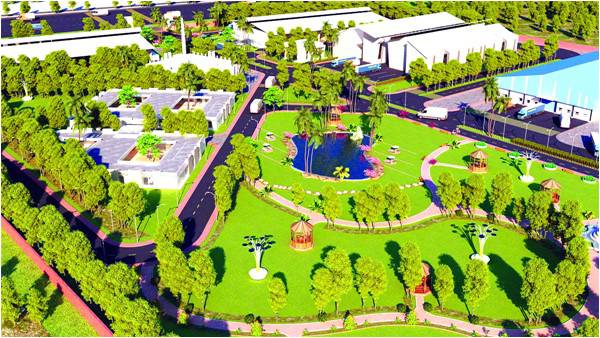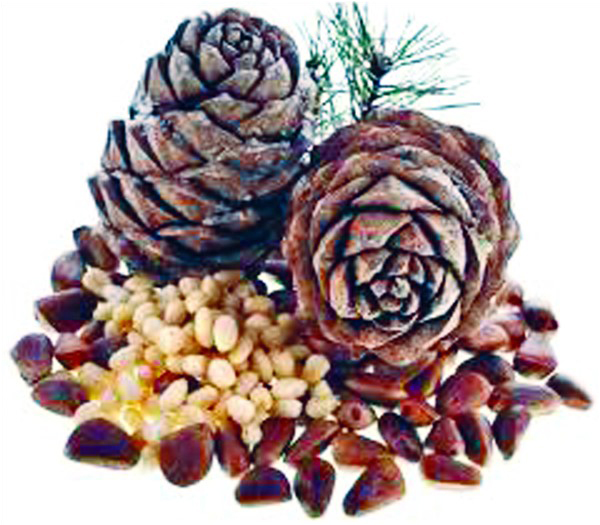
Once known for militancy and terrorism, the deserted dry terrain of South Waziristan has started producing pine nuts of supreme quality. The newly-established processing unit for pine seeds (Chilgoza) in South Waziristan’s agriculture park will boost pine nut exports from Pakistan, which is already ranked second largest exporter of pine seeds after China.
During a visit to South Waziristan, this scribe observed various sections of the pine seed processing unit in the agriculture park in Wana. The processing unit has several portions, which includes a collection point, an inspection area, a storage house, a clearing unit, a processing area and a loading point. The pine cone first reaches collection point from where it is cleared by inspectors. After collection and clearing, the pine cone is cut in small pieces and it is shifted to the main processing unit where seeds are separated from the cone. Pure seeds are then stored in the storage house of the unit, where they are also packed.
Pine nuts are called piñones in Spanish and pinoli or pignoli in Italian. However, the seeds of the pinyon pines (Pinus edulis and Pinus monophylla), which are produced in the south-western United States and in northern Mexico, are known as pinon nuts. Pine nuts are the jewels of their species. They are found in the western Himalayan forests of Pakistan and Afghanistan. Chilgoza pines appear similar to stone pines, featuring long slender, pointed kernels. These are famous around the globe for variety, quality taste and colour.
Last year, the European Union has imported pine nuts worth 1,0626 million euros. The quantity of those pine nuts was 2358,000 tons. Exports rose by $17 million in the previous fiscal year and Pakistan’s exports are also rising this year. The country is ranked the second biggest producer of pine nuts after China. This ranking is based on monetary value as well as on quantity. The total export value was more than 45 million euros for nearly 250,000 tons last year. Exports of pine nuts in 2012 were worth $51 million and this rose to $68 million in 2013, a source at the Ministry of Commerce told this scribe. He added that major importers of Pakistani pine nuts were China, United States, United Kingdom and EU countries.
Talking to The Friday Times inside the unit, Major Mohammad Imran Khan Niazi, the project director of the agriculture park, said the Suleiman Range in Pakistan had an area of 260 square kilometers where trees of pine nuts grew. In South Waziristan, he said, Khamrang was the only area which produced pine nuts in large quantities. He said South Waziristan and Balochistan produced the bulk of pine seeds in the country.
After the establishment of the processing unit, 10,000 tons of pine nuts will also reach from Afghanistan through Angor Ada. The agriculture park also has 128 shops for locals who buy and sell pine nuts and other fruits inside this facility.
The agriculture park has also cold storage units where various fruits can be stored for several months. In this section, the cold storage duration for apples is up to 52 weeks, peaches up to three weeks, water melons up to four weeks, apricots up to four weeks, pears up to 30 weeks, plums up to five weeks, pomegranates up to 16 weeks, grapes up to 26 weeks, oranges up to 12 weeks, olives up to five weeks and guavas up to three weeks. Similarly, the storage units can also store vegetables such as potatoes for 26 weeks, tomatoes for three weeks, spinach for two weeks, okra for two weeks, radish for four weeks, turnips for 20 weeks, carrots for 26 weeks, cauliflowers for four weeks and eggplants for two weeks.
The project has opened up avenues for development in South and North Waziristan and is also cutting down on waste. It ensures availability of essential food items for the locals and the project will help boost socio-economic development of the area by creating jobs and value addition of the produce.
The project was part of the overall development strategy that went along with the rehabilitation and reconstruction process in the tribal region. There has been tremendous improvement in the overall security environment. The entire effort is now geared toward reconstruction and projects to improve the living conditions of the people.
It is also important to mention that South Waziristan also has huge potential to generate revenues through gas and gem stones reservoirs. However, a sincere and dedicated leadership needed to explore this hidden wealth of the country and to utilise it for the uplift of the people of Waziristan.
During a visit to South Waziristan, this scribe observed various sections of the pine seed processing unit in the agriculture park in Wana. The processing unit has several portions, which includes a collection point, an inspection area, a storage house, a clearing unit, a processing area and a loading point. The pine cone first reaches collection point from where it is cleared by inspectors. After collection and clearing, the pine cone is cut in small pieces and it is shifted to the main processing unit where seeds are separated from the cone. Pure seeds are then stored in the storage house of the unit, where they are also packed.
Pine nuts are called piñones in Spanish and pinoli or pignoli in Italian. However, the seeds of the pinyon pines (Pinus edulis and Pinus monophylla), which are produced in the south-western United States and in northern Mexico, are known as pinon nuts. Pine nuts are the jewels of their species. They are found in the western Himalayan forests of Pakistan and Afghanistan. Chilgoza pines appear similar to stone pines, featuring long slender, pointed kernels. These are famous around the globe for variety, quality taste and colour.
Last year, the European Union has imported pine nuts worth 1,0626 million euros. The quantity of those pine nuts was 2358,000 tons. Exports rose by $17 million in the previous fiscal year and Pakistan’s exports are also rising this year. The country is ranked the second biggest producer of pine nuts after China. This ranking is based on monetary value as well as on quantity. The total export value was more than 45 million euros for nearly 250,000 tons last year. Exports of pine nuts in 2012 were worth $51 million and this rose to $68 million in 2013, a source at the Ministry of Commerce told this scribe. He added that major importers of Pakistani pine nuts were China, United States, United Kingdom and EU countries.

Talking to The Friday Times inside the unit, Major Mohammad Imran Khan Niazi, the project director of the agriculture park, said the Suleiman Range in Pakistan had an area of 260 square kilometers where trees of pine nuts grew. In South Waziristan, he said, Khamrang was the only area which produced pine nuts in large quantities. He said South Waziristan and Balochistan produced the bulk of pine seeds in the country.
After the establishment of the processing unit, 10,000 tons of pine nuts will also reach from Afghanistan through Angor Ada. The agriculture park also has 128 shops for locals who buy and sell pine nuts and other fruits inside this facility.
The agriculture park has also cold storage units where various fruits can be stored for several months. In this section, the cold storage duration for apples is up to 52 weeks, peaches up to three weeks, water melons up to four weeks, apricots up to four weeks, pears up to 30 weeks, plums up to five weeks, pomegranates up to 16 weeks, grapes up to 26 weeks, oranges up to 12 weeks, olives up to five weeks and guavas up to three weeks. Similarly, the storage units can also store vegetables such as potatoes for 26 weeks, tomatoes for three weeks, spinach for two weeks, okra for two weeks, radish for four weeks, turnips for 20 weeks, carrots for 26 weeks, cauliflowers for four weeks and eggplants for two weeks.
Pakistan is ranked the second biggest producer of pine nuts after China
The project has opened up avenues for development in South and North Waziristan and is also cutting down on waste. It ensures availability of essential food items for the locals and the project will help boost socio-economic development of the area by creating jobs and value addition of the produce.
The project was part of the overall development strategy that went along with the rehabilitation and reconstruction process in the tribal region. There has been tremendous improvement in the overall security environment. The entire effort is now geared toward reconstruction and projects to improve the living conditions of the people.
It is also important to mention that South Waziristan also has huge potential to generate revenues through gas and gem stones reservoirs. However, a sincere and dedicated leadership needed to explore this hidden wealth of the country and to utilise it for the uplift of the people of Waziristan.

